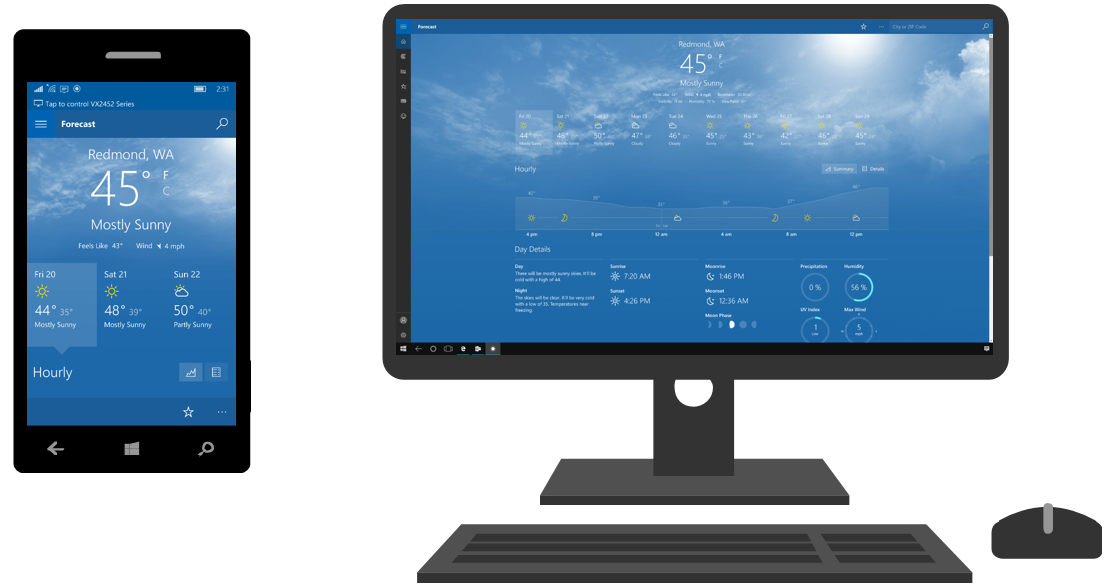Microsoft shows how to optimize Windows 10 Mobile apps for Continuum support

One of the biggest selling points of Microsoft's universal Windows platform is that apps made for Windows 10 Mobile can be used as if they are PC apps via its Continuum feature. Now the company has offered some tips to developers to help them get the most out of Windows 10 Mobile and Continuum.

Microsoft says that all apps made for Windows 10 Mobile support Continuum by default (apps made just for Windows 10 for the PC or the Xbox One do not automatically support Continuum). It added:
"This weather app is a good example. The developer of this app did not know Continuum existed before they built the app. They were delighted to find that because they targeted the universal device family, their app worked just like it does on a desktop PC by default."
The highly technical blog post goes over some resouces developers can use to optimize their Windows 10 Mobile apps so it works well when it switches to its PC version via Continuum. One think to keep in mind are changes in display resolution when switching such an app from working on a smartphone to a big screen display:
The mobile device will generally have a scale between 200 and 400. The connected display will most likely have a scale of 100 (most monitors) or 150 (most TVs). When the user downloads your app from the Store, only scale assets for the mobile device screen will be deployed to the mobile device by default. After this, an app update will be triggered each time the user connects to an external display with a new scale factor. This update will pull down the best assets for the new display. If the best assets are already on the mobile device, then no update is necessary.
Source: Microsoft
All the latest news, reviews, and guides for Windows and Xbox diehards.

John Callaham was a former contributor for Windows Central, covering Windows Phone, Surface, gaming, and more.
